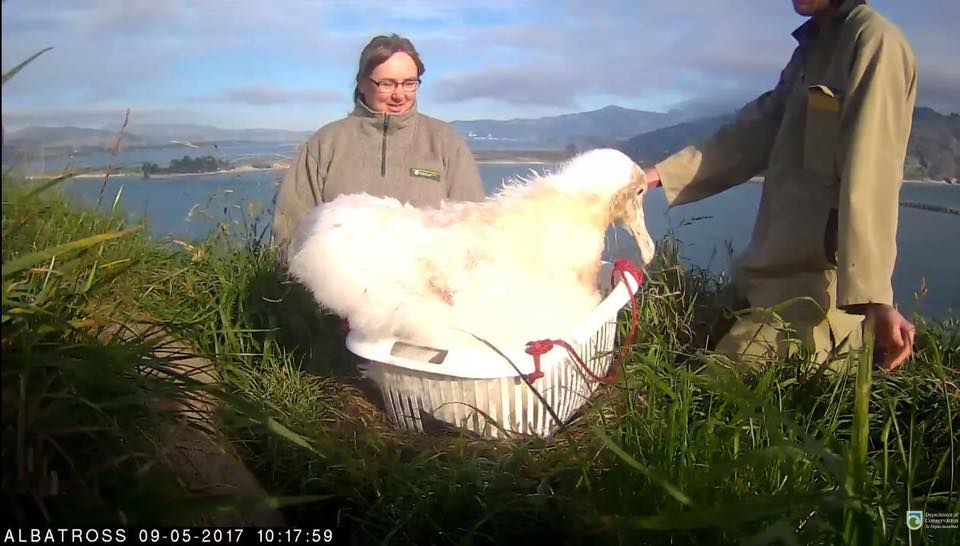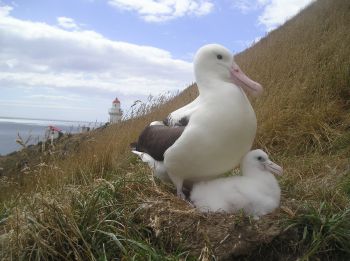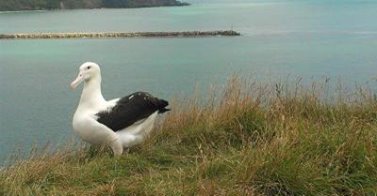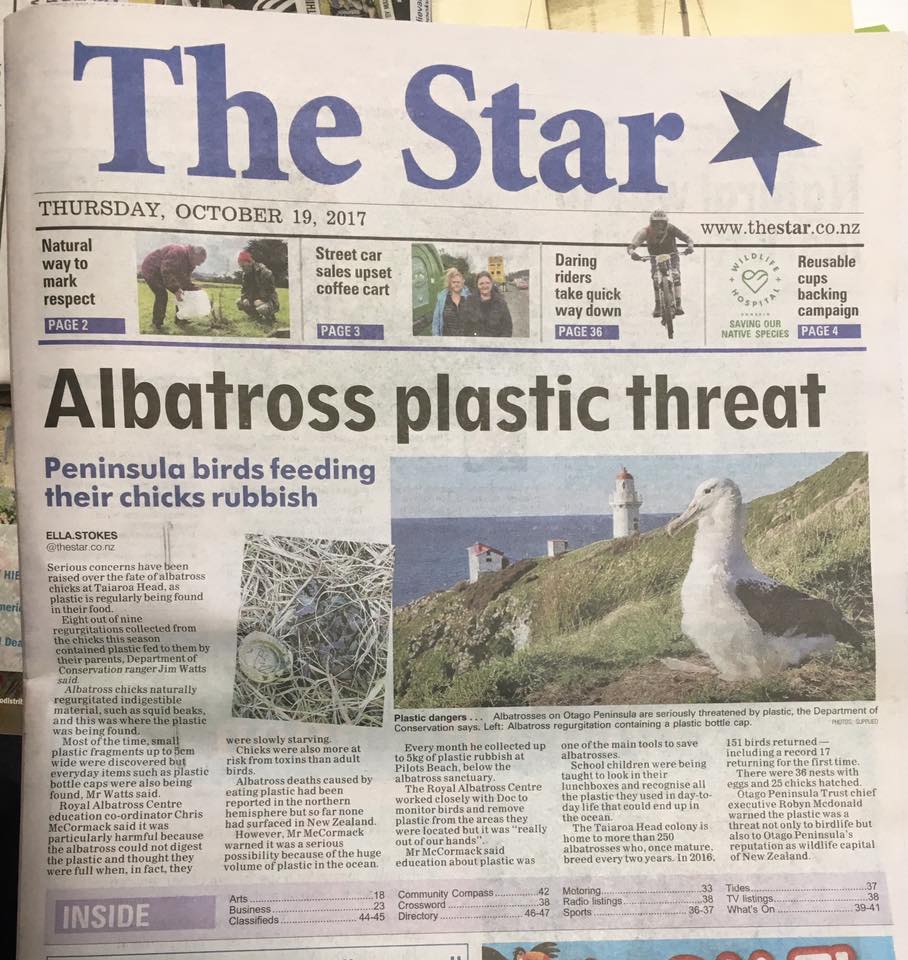A total of 23 globally Endangered and nationally “Naturally Uncommon” Northern Royal Albatross Diomedea sanfordi chicks has fledged at Taiaroa Head situated on the mainland of New Zealand’s South Island this last breeding season. Twenty-five eggs hatched from 38 laid by 36 pairs. Two of the 36 breeding attempts were by female-female pairs which laid a total of four eggs (one each), only one of which was fertile so at least one extra-pair copulation by a male must have occurred. Of the 34 fertile eggs laid, eight embryos died before hatching and one egg was crushed. Two chicks died soon after hatching, probably trampled by parents during nest change overs.
In te 2016/17 season 17 birds banded as chicks returned to the breeding locality as first-time visitors after spending from four to ten years at sea since fledging. The 2017/18 breeding season is set to start with 54 banded birds clocked in by 14 October and expected to commence laying eggs next month.
Among the chicks fledging in the 2016/17 season was Tūmanako (on 28 September), whose nest was followed by a live-streaming camera (“Royal Cam”), now in its second year of operation (watch the season's highlights). An unnamed chick was the last of the 23 to fledge in mid October. Its male parent was Toroa, the 500th albatross to have fledged from the colony, in 2007, and first seen back in the colony as a seven-year old in 2014. Toroa (Maori for albatross) is the son of Button, the last chick Grandma produced in 1989. At 62 years of age Grandma was then the oldest recorded albatross in the World (click here).

Big Bird! Royal Cam 2016/17 chick Tūmanako gets weighed while still in the downy phase, photograph from camera footage

Toroa, as a chick in 2007, photograph by Lyndon Perriman

Toroa returns to Taiaroa Head as an adult bird
Read news reports here and here and follow the Royal Albatross Centre on Facebook.
Meanwhile, concerns have been raised of Taiaroa’s albatrosses consuming plastic items while at sea. Eight out nine regurgitations collected from chicks this last season contained plastic items. “Most of the time, small plastic fragments up to 5 cm wide were discovered but everyday items such as plastic bottle caps were also being found” (click here). Previously, squid lures and plastic fishing floats have been recovered from Taiaroa Northern Royal Albatrosses.

With thanks to the Royal Albatross Centre.
John Cooper, ACAP Information Officer, 19 October 2017

 English
English  Français
Français  Español
Español